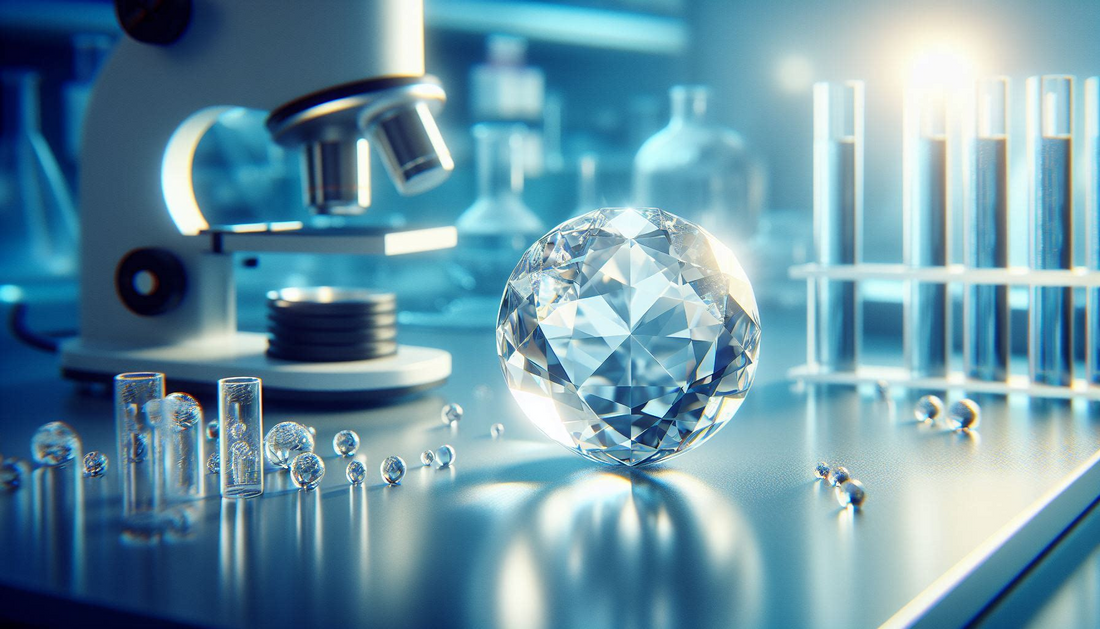In recent years, lab-grown diamonds have carved out a significant niche in the jewelry industry. These gems, created through advanced technological processes, offer an attractive alternative to traditional mined diamonds. If you're curious about their value and how they stack up against natural diamonds, you’ve come to the right place. This comprehensive guide will delve into what influences the value of lab-grown diamonds and why they might be a smart choice for your next purchase.
|
Factor |
Description |
Impact on Value |
|
Quality and Certification |
Cut, color, clarity, and certification determine the diamond's overall quality and authenticity. |
Higher quality and certification increase value. |
|
Size and Carat Weight |
Larger diamonds (greater carat weight) are generally more valuable, though lab-grown diamonds are more affordable than natural diamonds of the same size. |
Larger diamonds typically cost more, but are cheaper than natural diamonds of the same size. |
|
Market Demand |
Growing popularity and ethical considerations drive up demand for lab-grown diamonds. |
Increased demand can raise value, though they remain more affordable compared to natural diamonds. |
|
Brand and Origin |
Diamonds from reputable laboratories or brands may carry a premium. |
Brand and origin can affect the value, with established names often commanding higher prices. |
|
Affordability |
Lab-grown diamonds are generally 20-40% less expensive than natural diamonds. |
More affordable compared to natural diamonds of the same quality and size. |
|
Ethical and Environmental Impact |
Lab-grown diamonds are free from ethical issues and have a smaller environmental footprint. |
Increased appeal due to ethical and environmental benefits. |
What Are Lab-Grown Diamonds?

Lab-grown diamonds, also known as synthetic or cultured diamonds, are real diamonds created in a controlled laboratory environment. They possess the same physical, chemical, and optical properties as natural diamonds but are produced through methods like High Pressure High Temperature (HPHT) or Chemical Vapor Deposition (CVD).
Factors Influencing Lab-Grown Diamond Value

1. Quality and Certification
- Cut:The quality of the cut affects the diamond’s brilliance and sparkle. Well-cut lab-grown diamonds can rival or even surpass natural diamonds in their radiance.
- Color:Lab-grown diamonds come in a range of colors. Higher color grades (less color) typically increase the diamond’s value.
- Clarity:Like natural diamonds, lab-grown diamonds are graded based on their internal and external flaws. Higher clarity grades mean fewer inclusions and a higher value.
- Certification:Reputable gemological laboratories provide certification for lab-grown diamonds, ensuring their quality and authenticity. Certification can enhance the diamond’s value and buyer confidence.
2. Size and Carat Weight
The size of a diamond is directly related to its carat weight. Larger lab-grown diamonds generally command higher prices, though they can still be more affordable than natural diamonds of the same size.
3. Market Demand
The popularity of lab-grown diamonds is growing due to their ethical and environmental advantages. As demand increases, so does their value. However, lab-grown diamonds typically cost less than their natural counterparts due to lower production costs.
4. Brand and Origin
Just like natural diamonds, the brand and origin of lab-grown diamonds can impact their value. Diamonds from renowned laboratories or brands may come with a premium.
Benefits of Lab-Grown Diamonds

- Affordability:Lab-grown diamonds generally cost 20-40% less than natural diamonds, making them an attractive option for budget-conscious buyers.
- Ethical Sourcing:Lab-grown diamonds are free from the ethical concerns associated with mined diamonds, such as conflict financing and poor labor practices.
- Environmental Impact:Producing diamonds in a lab is less environmentally damaging compared to traditional mining methods, which can cause significant ecological disruption.
Conclusion
Lab-grown diamonds offer exceptional value, combining beauty, quality, and ethical considerations. As technology advances and market dynamics shift, lab-grown diamonds are likely to become even more prominent in the jewelry industry. Whether you’re purchasing an engagement ring, a special gift, or a personal luxury, understanding the factors that influence the value of lab-grown diamonds can help you make an informed and satisfying choice.
For those considering a lab-grown diamond, it's important to focus on certification, quality, and personal preferences to find the perfect gem that meets both your aesthetic and ethical standards.





